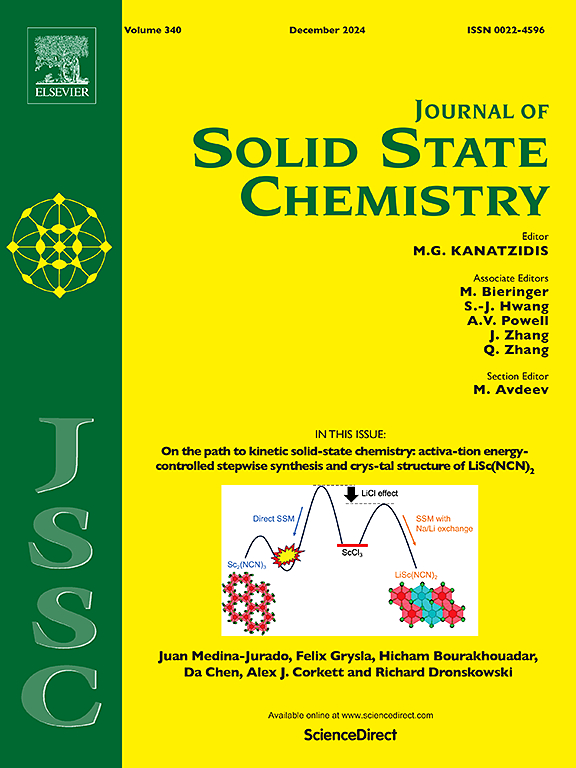Dual ligand passivation on improving photovoltaic performance for carbon based PbS quantum dot solar cells
IF 3.2
3区 化学
Q2 CHEMISTRY, INORGANIC & NUCLEAR
引用次数: 0
Abstract
The surface traps of quantum dots are still serious problems to limit the photovoltaic performance of carbon based quantum dot solar cells. In order to optimize the surface state of quantum dot solar cells, PbI2/MPA dual surface ligand is introduced for direct one-step surface passivation strategy to reduce the generated undercoordinated sites and OH group in PbS quantum dot solar cells, which can provide uniform, compact and stable structure for PbS thin films. The optical absorption and charge separation properties of carbon based PbS quantum dot solar cells have been improved under this PbI2/MPA dual surface ligand passivation process. The excellent trap passivation has effectively improved the charge transfer efficiency of the solar cells, which exhibits higher open-circuit voltage (25.33 mA/cm2), short-circuit current density (507.8 mV) and fill factor (0.525) value for carbon based PbS quantum dot solar cells. As a result, photovoltaic conversion efficiency of carbon based PbS quantum dot solar cells has been enhanced from 5.36 % to 6.75 % under this direct one-step dual PbI2/MPA surface ligand passivation. This work provides an effective traps passivation process to further optimize the PbS quantum dots for optoelectronic devices applications.

求助全文
约1分钟内获得全文
求助全文
来源期刊

Journal of Solid State Chemistry
化学-无机化学与核化学
CiteScore
6.00
自引率
9.10%
发文量
848
审稿时长
25 days
期刊介绍:
Covering major developments in the field of solid state chemistry and related areas such as ceramics and amorphous materials, the Journal of Solid State Chemistry features studies of chemical, structural, thermodynamic, electronic, magnetic, and optical properties and processes in solids.
 求助内容:
求助内容: 应助结果提醒方式:
应助结果提醒方式:


